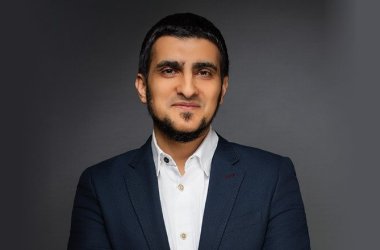By Zohra Yermeche, Program Director for Connect To Learn at Ericsson

COVID-19 highlighted many of the digital disparities which exist in today’s world. At a time when many of the world’s students shifted from physical to digital, we were faced with the hard truth that there are still 3.6 billion people in the world who are unconnected. The rise in digital literacy, together with the rapid digitalisation of the economy, means that ensuring fair and equal access to both education and future job markets will rest on the extent of digital inclusion within our societies.
What is digital inclusion and why is it important?
Technology plays a big role in the quality and scope of how we learn, such as new digital learning platforms which are estimated to reach 350 billion USD by 2025; what we learn, with an emphasis on programming, robotics, AI and automation; and how we can use it in the job market, with digital skillsets increasingly becoming a prerequisite of tomorrow’s workforce.
The changes which are happening today show the disparity between the developed and undeveloped world. If you are not connected, that shows you the leap which you have to make between the connectivity aspect, access to education and benefits which are derived from that.
Closing this digital divide, with those who are not connected or not considered to be digitally literate, is imperative to ensuring a fair distribution of digital opportunities across countries, locations, gender, socioeconomic status, and age.
Access to education in the digital age
In 2010, we co-founded the Connect To Learn initiative with the Earth Institute at Columbia University and Millennium Promise, with a focus on delivering connectivity and ICT tools to enhance teaching and learning in unconnected, underprivileged and largely unrepresented communities.
Since our first projects in the Millennium Villages, we’ve helped to connect and increase the digital inclusion of more than 200,000 students worldwide. We have also increased our efforts to close the digital divide from a content, syllabus and platform side.
As a technology company, we quickly discovered that we can offer so much more than connectivity, but furthermore we can help improve learning processes and methodologies so learning becomes more impactful. For example, through partnerships with like-minded organisations, we have helped to disseminate content through digital learning tools such as mobile apps.
Digital inclusion through public-private partnerships
Today, there is a significant need for digital skills courses. Key technology areas such as AI, robotics and app development are advancing at such a rapid pace, which can make it difficult to ensure an effective transfer of competence to emerging workforces.
Such is the pace of change for topics such as these, public academic institutions will invariably struggle to take learning beyond a basic theoretical level. Public-private partnerships will therefore be key to addressing this, by developing advanced curriculums and delivering the necessary quality and scale of access.
Through digital methodologies, and with a focus on improving digital skills for students across all communities, our commitment is to ensure that future generations continue to have the skills and knowledge to find opportunity in a changing digital world. This was what we set out to do when we launched Connect To Learn ten years ago, and this will continue to be our priority in this next critical decade.





